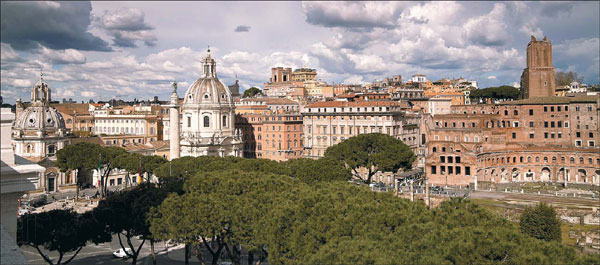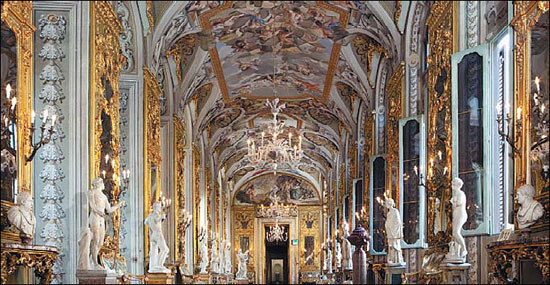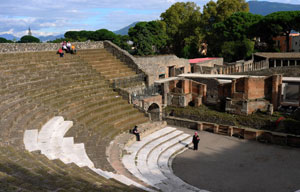City of hidden charms
To avoid the touristy crowds and the hustle and bustle that today's Rome is, visit three rarely visited museums for their beauty, oddity and beguiling atmosphere, writes Francine Prose.
One of the joys of Rome is its ability to make you feel that it has spent centuries accumulating layers of beauty and history, patiently waiting just for you to arrive. Even when the city is filled with tourists shuffling behind their guides' upheld umbrellas, there are sites where you can enjoy Rome's cultural riches in relative comfort. For those who tire of jostling for enough space to fling a coin into the Trevi Fountain, or who, lining up outside the Colosseum, find themselves wondering if the lines at Disney World might have been shorter, Rome offers plenty of opportunities to escape the crowds.
I find refuge in Rome's museums as fascinating and rewarding, if not necessarily as spectacular, as any of the must-see spots on the traveler's itinerary. Of course, there are many other sublime places in this ancient city where you can find solitude and isolation. In the thick shade of the Protestant Cemetery, you can commune in privacy with the spirits of Keats, Shelley and the other bright stars of art and literature buried along its serene, well-tended paths.
But Rome is known for its museums, which can provide a meditative, unhurried way to take in the city through its works of art. And it has hidden gems that even the most intrepid travelers may not stumble across.
|
Rome's cultural riches can satisfy any discerning travelers, either along the well-tended paths or in less-known parts of the city. Photos provided to China Daily |
On a recent visit, I was once again delighted by three rarely visited museums, each of which could hardly be more different from the others. What they share is beauty, oddity, charm, the possibility of privacy and the welcome freedom from having to make a reservation, as you do at Galleria Borghese, or from having to join the crowds trudging up the steps of Piazza del Campidoglio to see the Capitoline collections.
|
Museo di Palazzo Doria Pamphilj is a Baroque palace whose walls are covered with art. |
Conveniently located between Piazza Navona and Piazza Venezia, the Museo di Palazzo Doria Pamphilj lets you leave the pedestrians overflowing the narrow sidewalks of Via del Corso and the traffic buzzing past, and step into a peaceful setting, a Baroque palace whose walls are covered with art.
Although it was restored in 1996, the palace gives the sense of not having changed much since the 18th century, when the Pamphilj family moved in, installed and added to the collection that Prince Camillo Pamphilj had begun curating a century before.
Of the more than 700 paintings and sculptures on display, perhaps the most famous is Velazquez's portrait of Pope Innocent X as a stern, intimidating figure, a portrait so highly individualized and so persuasively authentic that one can easily believe the story that its subject remarked, "It is too true!"
Nearby is Bernini's marble bust of the same pope - looking considerably less ferocious and more preoccupied than scary.
The collection includes two Caravaggios: the seductive and swooning Penitent Magdelene as well as his beautiful The Rest on the Flight Into Egypt. There are canvases by Hans Memling, Titian, Rubens, Guercino, Correggio, Claude Lorrain, Tintoretto and Lorenzo Lotto.
But you may have to persevere to discover them amid the hundreds of paintings done by less-well-known artists, canvases hung salon-style and covering nearly every inch of wall space.
You can, if you wish, let the helpful audio guides included with the price of admission usher you from room to room, or else you can buy the little booklet (a bargain at 1 euro, about $1.30) that lists the paintings by gallery and number.
Alternatively, you can locate the Velazquez and the Bernini and the Caravaggios and then surrender to the experience of seeing art the way it was shown for centuries before the advent of the modern museum's more restrained and spare approach to exhibition design.
The way I most like to experience the museum is to forget about seeking out the "name" painters and focus on paintings I like - only afterward checking the booklet to see who created them.
In that way you can more deeply appreciate works with which you are only vaguely acquainted. Better yet, you can discover artists with whom you are entirely unfamiliar but whose works speak to you in a very personal way, as does the setting in which they are shown.
























